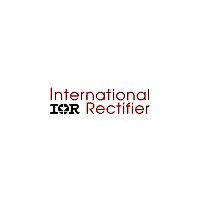IRPLCFL3 International Rectifier, IRPLCFL3 Datasheet - Page 5

IRPLCFL3
Manufacturer Part Number
IRPLCFL3
Description
KIT DESIGN CFL TRIAC DIMMING
Manufacturer
International Rectifier
Datasheet
1.IRPLCFL3.pdf
(12 pages)
Specifications of IRPLCFL3
Main Purpose
Lighting, Ballast Control
Utilized Ic / Part
IR2156
Lead Free Status / RoHS Status
Contains lead / RoHS non-compliant
Secondary Attributes
-
Embedded
-
Primary Attributes
-
Other names
*IRPLCFL3
IRPLCFL3
The voltage waveform at the junction of D2 and D3, ignoring high frequency
components is equivalent to the output voltage of the dimmer. With respect to the
negative rail of the bus this will be a phase cut approximate sine wave with a DC offset
such that the negative peak is at 0V. This is reduced by the voltage divider network of
R8 and R13 which is then fed into D6 and D15. Only the signal representing the positive
half-cycle of the mains is left at the anode of D5 which is then converted to a DC level
via the filter network of R7, R10 and C10. Because the minimum dimming level occurs
at a point where the dimmer is still capable of providing enough output for the ballast to
operate, this voltage will never actually be zero. Also when the dimmer is at maximum
this voltage will only be approximately 3 times the level at minimum dimming level.
Since we require a reference voltage to control the lamp current in a closed loop system
it is clear that this would only allow dimming down to one third of the lamp current which
is not sufficient range. For this reason an offset stage has been added. The inverting
input of op amp IC1a is connected to a reference voltage determined by R4 and R5
divided down from the IC supply voltage which is clamped at around 15.6V by the
IR2156. The gain is positive and set by the ratio of R11 and R6.
If the voltage at the non-inverting input is Vin and the voltage at the junction of R4 and
R5 is Vref, then Vout will be;
(1 + R11/R6).Vin – (R11/R6).Vref
In this circuit R6 = R11 therefore;
Vout = 2.Vin – Vref
The values of R4 and R5 have been selected so that when the dimmer is set to
minimum the output of IC1a will be zero and as the dimmer output is increased the
output of IC1a will increase to approximately 0.5V. The current sense resistor R14 is
selected to give 0.5V when the lamp current is at maximum.
The error amplifier is implemented in IC1b. The lamp current feedback is fed into the
non-inverting input and the control voltage is fed into the inverting input. The input
resistors R12 and R14 have been chosen with an integrating capacitor of 10nF to give
the best response and elimination of flicker but to avoid generating RF interference. The
output of IC1b works as a current source. The more positive the output swings the more
current is supplied to the CT pin of the IR2156 which is added to the current provided by
RT causing CT to charge more quickly and the frequency to increase. If IC1b output is
zero the frequency is at its minimum determined by the value of RT only. During preheat
the frequency is set by RPH only and IC1b has no effect.
R9 ensures that even when the dimming reference voltage from the output of IC1a is
zero, the error amplifier has a small voltage at the inverting input which means that it is
impossible to dim the lamp below a particular point. This point is selected as the
minimum lamp level at which the lamp will remain lit and will not flicker. The resistor
R22 can be added if necessary to remove striations (dark rings) in the lamp that may
occur at low dimming levels.
5











